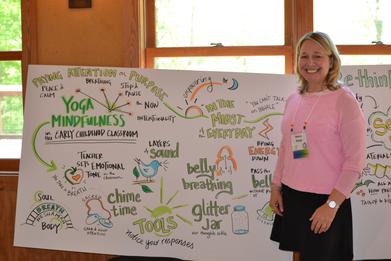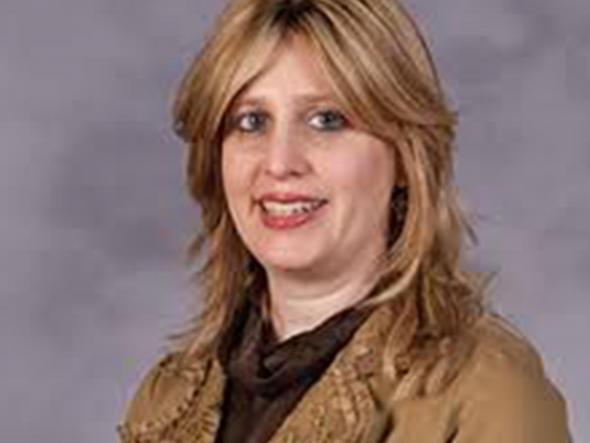Mindfulness in the Classroom
He who learns in order to teach will be enabled both to learn and to teach.
But he who learns in order to practice will be enabled to learn, to teach,
to observe, and to practice. Rabbi Yishmael, Pirke Avot, Ch. 4
Mindfulness is getting a lot of attention these days. We read about it in our newspapers and in our magazines. We hear how celebrities, professional athletes, corporate executives and even politicians are embracing the age-old art and science of mindfulness. Universities are teaching it and scientists are researching it.
But while there certainly is a lot of buzz about it, mindfulness in education is relatively new. In fact, when discussing this with Rabbi Tully Harcsztark, founding principal of SAR High School in New York, I said being mindful is so beneficial because it gives us the opportunity to get out of our heads and into our bodies. He said, “I understand that cognitively.” The irony was not lost on me. As an educational consultant specializing in mindfulness training for over 20 years, when I put the words mindfulness and education in the same sentence I know that most likely I’m going to have to make a hard case for soft skills.
So here we go!
When we talk about soft skills we are referring to traits like kindness, compassion and empathy, to name a few. Social scientist Brene Brown’s research on vulnerability and shame has shown how valuable it is to strengthen soft skills. Contrary to our culture’s perception that soft skills represent weakness, her research has shown that it takes great strength and courage to cultivate soft skills.
Historically in education, soft skills have taken a back seat to the hard skills of academic intelligence and performance. Academic rigor has traditionally driven our schools. But thanks to the relatively recent movement to foster social and emotional learning (SEL) in schools, very slowly we are starting to see that it is equally if not more important to support the well-being of our students, as well as our own. Soft skills, which are at the heart of SEL, are all fostered through mindfulness awareness.
Adapting the definition of Jon Kabat-Zinn, who is internationally best known for bringing mindfulness into mainstream medicine and society, I define mindfulness as “paying attention on purpose." Current research in cognitive neuroscience shows that cultivating a mindfulness practice in the classroom offers many benefits for both teachers as well as students, including an inner sense of calm and clarity; improved concentration, focus, attention, conflict resolution, and empathy. By paying attention on purpose it becomes easier to develop and maintain a moment-by-moment awareness of what’s going on, beginning with thoughts, feelings, bodily sensations, and surrounding environment and that creates a great springboard for fostering a safe and supportive classroom that nurtures growth.
Harnessing the capacity for our attention, as well as pro-social behavior, empathy and self-regulation, are all things that help reduce stress, improve self-awareness and reflective capacities, which are all necessary for effective teaching.
Mindfulness promotes the regulation of the executive functions of emotion, attention, thought and behavior. When these executive functions are strengthened through mindfulness training, it leads to greater social-emotional competence. Since teachers set the emotional tone for the classroom, supporting their social-emotional competence is a great place to start.
Parker Palmer says we come to teaching for reasons of the heart. Yet teaching is demanding, and it is hard to maintain that heart-centered approach. Not only do teachers need to know their content, they also, according to mindfulness researcher Patricia Jennings, need to be wizards of attention, being aware of the entire classroom and everything that’s going on in it. They need to be attuned to the level of student engagement as well as to the social-emotional dynamics of the classroom.
Jennings stresses the importance of emotional awareness in fostering a harmonious and healthy learning environment. When a teacher can learn to pay attention to her own thoughts and feelings without judging them, she can be more attuned to the social and emotional dynamics in the room. When teachers take a moment to pause and center themselves, they lead by example and model the type of attention, self-control, and regulation they hope to foster in their students. This makes teaching gratifying and reduces teacher burnout, thus fostering teacher retention and longevity in the field.
What would schools look like if, when a student is frustrated, angry, disappointed, sad or even feeling joyful and proud, she would hear these words from her teacher:
Take a few moments to sit quietly… bring your awareness to your breath. Just observe its natural rhythm, watching as it rises and falls. As you watch and observe your breath, also have an awareness of the feelings you are having, without needing to change a thing. Watch them like waves of the ocean, coming and going. Now with conscious attention deepen your breath, and bring awareness to the stomach as the inhale makes it rise and the exhale makes it fall. Then to make the breath even deeper, on an inhale watch the stomach rise, then the ribs expand, and on the exhale watch the ribs release and the stomach contract. Now go even deeper, building the upward movement of the breath even higher while breathing deep into the belly, then the ribs, now the collarbones, and on the exhale allow the exhale to descend from the collarbones, to the ribs and finally the belly while engaging the abdominal muscles.”
There are many benefits to doing this type of wave breathing, including calming down difficult or any big emotions and circumstances. Using mindfulness as an intervention helps students be more in touch with their internal state, physically, mentally, and emotionally, helping them be able to identify their feelings and self-modulate, which ultimately leads to better student learning.
Our culture tends to think that slowing down to pay attention in the moment is “doing nothing,” a waste of time in today's high-tech, fast-paced world. However, so much “happens” when we pause with intention. The teacher is able to take in the entire classroom and reach every student. It gives her time to ask, “What’s happening now? How am I feeling? What do my students need?” Students gain time to process both the content as well as their experiences, which leads to better retention. This is mindFUL(L)ness vs. mindlessness.
As we see, these skills are extremely beneficial. As author Seth Godin says, these things may be skills, but they certainly are not “soft.” We should refer to them more accurately as real skills.
As educators, we know that there is so much uncertainty about our students’ futures. We don’t know what jobs will be available for them. As Harvard’s Tony Wagner says, we don’t even know what we are preparing them for. But one thing we do know is that it will be of great value for them to have an inner reserve of real skills and tools like resilience, calming strategies, and relaxation techniques along with tools for self-awareness, modulation and regulation. When we help children in this way, we equip them with necessary life skills to better navigate through our changing times—exactly what they will need for their future success, however that will be defined.
From my upcoming book on bringing yoga and mindfulness into the lives of children.





